Brothers Cyril and Louis Keller designed and built the first small, lightweight, three-wheel, front-end loader in their machinist-blacksmith shop in Rothsay, Minnesota. A local farmer wanted to mechanize cleaning manure from his obstacle-filled, two-story turkey barn. The machine, first used in 1957, was able to turn completely around within its own length. Melroe Manufacturing Company, Gwinner, ND purchased the rights to the Keller loader and hired the Kellers to continue development of the loader in 1958.
2004

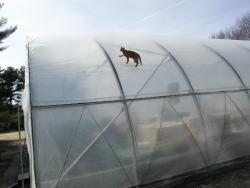
A crucial step in the evolution of modern plant agriculture was the development of low-cost, energy-efficient greenhouse structures that provide optimum growing conditions year-round. In 1964, Professor William J. Roberts developed the first air-inflated double-layer polyethylene greenhouse covering system at Cook College, Rutgers University.
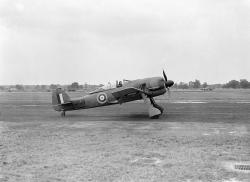
Farnborough's aeronautical history began in 1905 with the arrival of HM Balloon Factory in 1905, headed by Lt Col J.L.B. Templer. In 1908, the first powered aeroplane flight in Great Britain took place here, piloted by Samuel Cody. In 1912, Lord Trenchard established the first headquarters of the Royal Flying Corps and in 1918 the Royal Aircraft Establishment was founded.
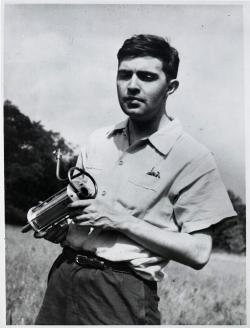
The first company in the United States dedicated solely to the production of the liquid rocket engine, Reaction Motors, Inc. (RMI) was formed in 1941. Its four founders were rocket enthusiasts and members of the American Rocket Society. RMI developed the rocket motors that powered the first supersonic flight, that of the X-1; the retro rockets for five NASA surveyor lunar soft landers; and prepackaged liquid rocket engines for the U.S. Navy Bullpup A & B air to ground missiles, among many other pioneering programs.

By the 1950s, synthetic fabrics - often wrinkle resistant and flame retardant - began to overtake cotton as the dominant U.S. textile fiber. To reverse this trend chemists and chemical engineers at the Southern Regional Research Center initiated research to modify cotton chemically. Their efforts in developing agents that crosslinked the cellulose fibers and in establishing crosslinking mechanisms led to improved durable press fabrics. SRRC studies also developed new agents that improved the durability of flame retardant cotton to laundering.
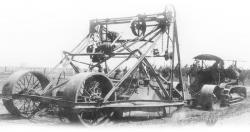
When Robert G. LeTourneau started moving earth in 1919, he thought that land leveling should require only one man. In 1920, by installing a generator and electric motors, R.G. was able to control the scraper blade from the tractor seat while driving the tractor.
In June 1922, LeTourneau developed his “Mountain Mover” with a telescoping bowl. He incorporated a floor behind the cutting edge taken from his previous designs, and employed welding instead of riveting to save weight.

At this facility on 20 December 1951 electricity was first generated from the heat produced by a sustained nuclear reaction providing steam to a turbine generator. This event inaugurated the nuclear power industry in the United States. On 4 June 1953 EBR-I provided the first proof of "breeding" capability, producing one atom of nuclear fuel for each atom burned, and later produced electricity using a plutonium core reactor.

On 28 April 1852 the first municipal electric fire alarm system using call boxes with automatic signaling to indicate the location of a fire was placed into operation in Boston. Invented by William Channing and Moses Farmer, this system was highly successful in reducing property loss and deaths due to fire and was subsequently adopted throughout the United States and in Canada.

Conceived as one of the major structures on the Prussian Eastern Railway, the Old Wisla Bridge at Tczew originally consisted of six wrought iron spans. Due to Germany's invasion of Poland at the beginning World War II in 1939, only three original spans remain today. These remaining spans represent a unique technical monument of civil engineering achievements in the mid-nineteenth century.

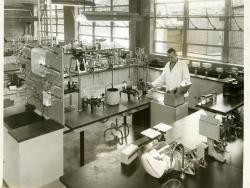
When Arnold Beckman, a professor of analytical chemistry at the California Institute of Technology, was asked to devise a way to measure acidity in citrus fruit, the resulting “acidometer” revolutionized chemical instrumentation. The innovative features of the pH meter, including its use of…
Read More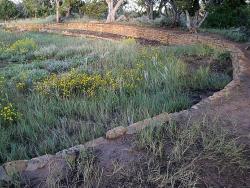
Four prehistoric reservoirs at Mesa Verde National Park were constructed and used between AD 750 and AD 1180. They are: Morefield Reservoir (in Morefield Canyon), Far View Reservoir (on Chapin Mesa), Sagebrush Reservoir (on an unnamed mesa), and Box Elder Reservoir (in Prater Canyon). These four…
Read More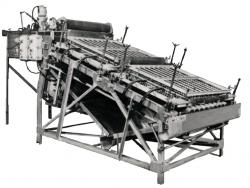
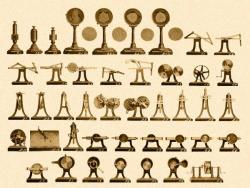
Kinematics is the study of geometry of motion. Reuleaux designed the models in the Cornell collection as teaching aids for invention, showing the kinematic design of machines. The mechanisms in the collection represent the fundamental components of complex machines and were conceived as elements…
Read More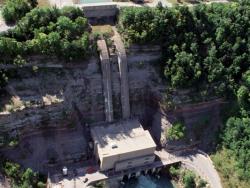
The Decew Falls Hydro-Electric Development was a pioneering project in the generation and transmission of electrical energy at higher voltages and at greater distances in Canada. On 25 August 1898 this station transmitted power at 22,500 Volts, 66 2/3 Hz, two-phase, a distance of 56 km to…
Read More
Built between 1794 and 1796 by the 22nd King of the Joseon Dynasty, Jeongio, this fortress is an outstanding example of early modern defensive works. Principally designed by Jeong Yak-Yong, it incorporated the most highly developed features of science and engineering from both the east and west…
Read More
The Northern Pacific High Line Bridge No. 64, built between 1907 and 1908, has continued to perform yeoman service in the uninterrupted flow of the Nation's commerce. Nearly, 100 years after this bridge officially opened, it still carries 125-ton car unit coal trains, double stack container…
Read More

Conceived as one of the major structures on the Prussian Eastern Railway, the Old Wisla Bridge at Tczew originally consisted of six wrought iron spans. Due to Germany's invasion of Poland at the beginning World War II in 1939, only three original spans remain today. These remaining spans…
Read More
On 28 April 1852 the first municipal electric fire alarm system using call boxes with automatic signaling to indicate the location of a fire was placed into operation in Boston. Invented by William Channing and Moses Farmer, this system was highly successful in reducing property loss and deaths…
Read More
At this facility on 20 December 1951 electricity was first generated from the heat produced by a sustained nuclear reaction providing steam to a turbine generator. This event inaugurated the nuclear power industry in the United States. On 4 June 1953 EBR-I provided the first proof of "…
Read More
When Robert G. LeTourneau started moving earth in 1919, he thought that land leveling should require only one man. In 1920, by installing a generator and electric motors, R.G. was able to control the scraper blade from the tractor seat while driving the tractor.
In June 1922,…
Read More
By the 1950s, synthetic fabrics - often wrinkle resistant and flame retardant - began to overtake cotton as the dominant U.S. textile fiber. To reverse this trend chemists and chemical engineers at the Southern Regional Research Center initiated research to modify cotton chemically. Their…
Read More
The first company in the United States dedicated solely to the production of the liquid rocket engine, Reaction Motors, Inc. (RMI) was formed in 1941. Its four founders were rocket enthusiasts and members of the American Rocket Society. RMI developed the rocket motors that powered…
Read More
Farnborough's aeronautical history began in 1905 with the arrival of HM Balloon Factory in 1905, headed by Lt Col J.L.B. Templer. In 1908, the first powered aeroplane flight in Great Britain took place here, piloted by Samuel Cody. In 1912, Lord Trenchard established the first…
Read More
A crucial step in the evolution of modern plant agriculture was the development of low-cost, energy-efficient greenhouse structures that provide optimum growing conditions year-round. In 1964, Professor William J. Roberts developed the first air-inflated double-layer polyethylene…
Read More
Brothers Cyril and Louis Keller designed and built the first small, lightweight, three-wheel, front-end loader in their machinist-blacksmith shop in Rothsay, Minnesota. A local farmer wanted to mechanize cleaning manure from his obstacle-filled, two-story turkey barn. The machine, first…
Read More

